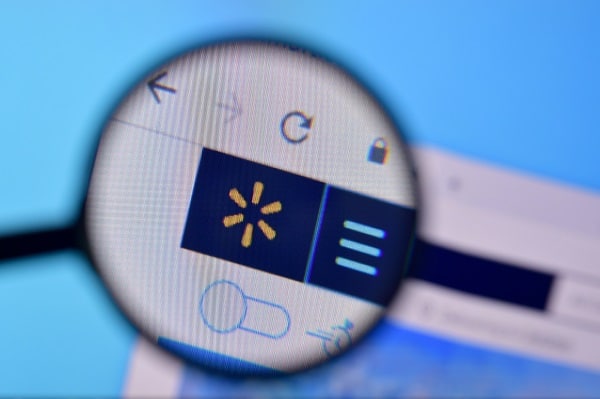In the digital age, it seems like there’s a new scam waiting around every corner. And one of the most common scams is fake websites. These websites often look very similar to the real thing, but some key differences can usually give them away. This post will look at some of the different ways you can spot a fake website and protect yourself from getting scammed! It will also provide some tips on what to do if you think you’ve found a fake website.
Contents
- 1 The Purpose Of A Fake Website
- 2 Ways To Spot A Fake Website
- 3 The URL Is Strange Or Misspelled
- 4 The Site Is Poorly Designed
- 5 Look For The Lock Next To The URL
- 6 Look For Contact Info On The Site
- 7 See If There Are Any Reviews Of The Site
- 8 Look Up The Domain Age
- 9 What To Do If You Find A Fake Website
- 10 Learn How To Spot A Fake Website!
The Purpose Of A Fake Website

There are many reasons why someone might create a fake website. Maybe they want to spread misinformation or promote a specific agenda. Perhaps they want to scam people out of money by selling counterfeit products. Or maybe they’re just trolls who enjoy causing havoc on the internet.
Whatever the reason, fake websites can be compelling. They often imitate the design of well-known sites, making it difficult to tell them apart at a glance. These reasons are why it’s important to be cautious when browsing the web. You never know when you might stumble upon a fake website!
Ways To Spot A Fake Website
Once you know what to look for, spotting a fake website is quite easy. However, many people still fall for these scams every day. If you’re not careful, you could easily find yourself on a fake website without even realizing it. Here are some of the different ways you can tell if a website is fake:
The URL Is Strange Or Misspelled

One of the first things you should do when visiting a website is checking the URL. If the URL looks strange or unfamiliar, that’s usually a red flag. Fake websites will often try to mimic the URL of a well-known site, so be sure to take a close look.
If the website masquerades as a legitimate website, the URL will often be misspelled or have strange characters. You can also do a Google search of the URL to see if anyone has flagged it as a fake site previously.
The Site Is Poorly Designed

Poor website design is often one of the first signs that a website is not legitimate. A few key things to look for can indicate that a website is not worth your trust. First, take a look at the overall design of the site. Is it professional-looking? Does it use stock photos or generic images? If so, this is a red flag.
Another thing to look for is spelling and grammar errors. A website full of errors is likely not run by someone who is particularly detail-oriented, which can be a sign that the site is unreliable. Finally, pay attention to the URL. Is it a strange mix of letters and numbers? Does it use odd domain extensions?
If so, these are also warning signs that a website may not be legitimate. You can help protect yourself from falling victim to fake websites by keeping an eye out for these red flags.
Look For The Lock Next To The URL

When you’re browsing the web, it’s crucial to be able to spot a fake website. One of the most important things to look for is the lock next to the URL. This lock indicates that the website is secure and that your information will be encrypted when you enter it.
If you don’t see a lock, that’s a red flag that the website might not be legitimate. Web browsers will often warn you next to the URL to let you know that the site might not be safe.
Look For Contact Info On The Site

One of the easiest ways to spot a fake website is to look for contact information. A legitimate website will typically have an easily accessible way to contact the company, whether it be a customer service phone number, email address, or mailing address. If you can’t find any contact information, or if the listed contact information appears fake, that’s a red flag that the website may not be legitimate.
See If There Are Any Reviews Of The Site

Another way to check if a website is fake is to see if anyone has reviewed the site. If there are no reviews, or all of the reviews are glowing with no mention of any negatives, that could be a sign that the site is fake. Another red flag is if the reviews are in poor English or if they all use similar language.
This could be a sign that the site has been created by someone who is not an actual English speaker attempting to be and therefore may not be trustworthy. And while this doesn’t necessarily mean that the site is fake, it’s always important to be cautious.
Look Up The Domain Age

With the proliferation of fake news and misinformation online, it’s more important than ever to be able to spot a fake website. One tell-tale sign of a phony website is its domain age. Since creating a website takes time, effort, and money, most fake websites are only online for a short period. By contrast, legitimate websites tend to have longer domain ages.
So, if you’re ever questioning the authenticity of a website, another one of the things you should do is check its domain age. If the site is less than a year old, or even just a few years old, that’s a strong indication that it might not be legitimate. Of course, there are always exceptions to this rule, but checking the domain age is a good starting point when determining whether a website is real.
What To Do If You Find A Fake Website

If you come across a fake website, there are a few steps you should take to report it. First, try to determine if the site is genuinely fake or just poorly designed. If it’s the latter, there’s no need to report it. However, if you’re confident that the site is fake, you can report it to the Federal Trade Commission. To do so, fill out the online complaint form at ftc.gov/complaint.
You will need to provide the URL of the website, as well as any other relevant information. Once you submit your complaint, the FTC will investigate and take appropriate action. Taking these steps can help protect yourself and others from being scammed by fake websites.
Learn How To Spot A Fake Website!
Spotting a fake website can be tricky, but it’s essential to be able to do. Whether surfing the web for fun or conducting research for a school project, you don’t want to stumble upon a fake site accidentally. Keep an eye out for the red flags mentioned in this article, and if you ever come across a website that looks suspicious, be sure to report it. By taking these precautions, you can help to make the internet a safer place!


